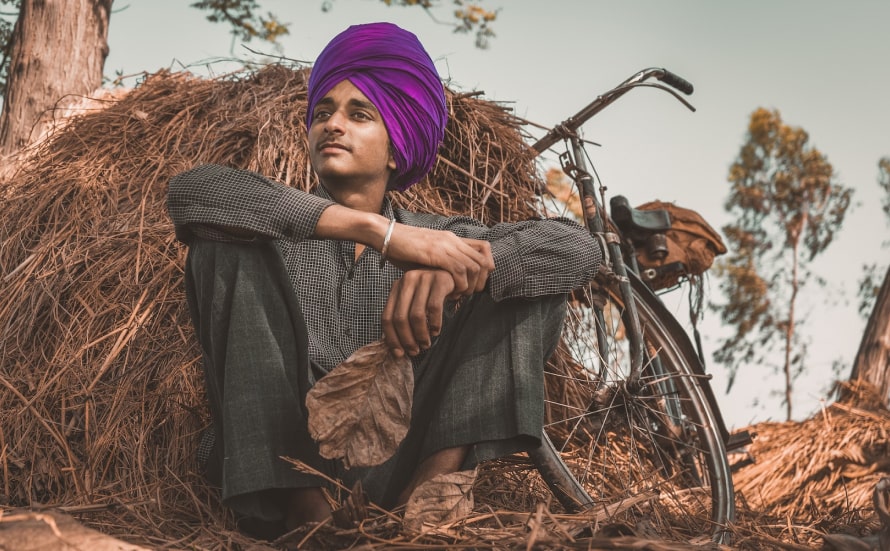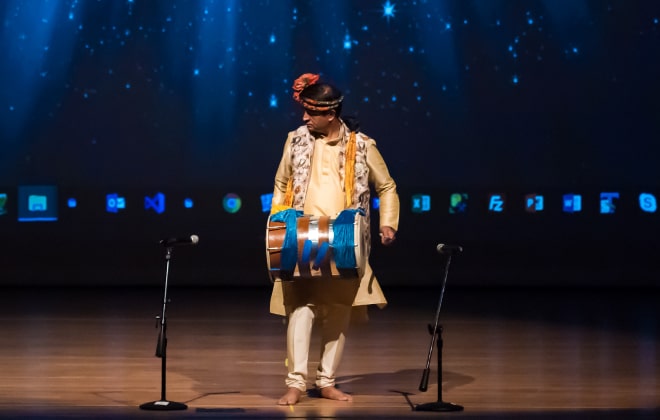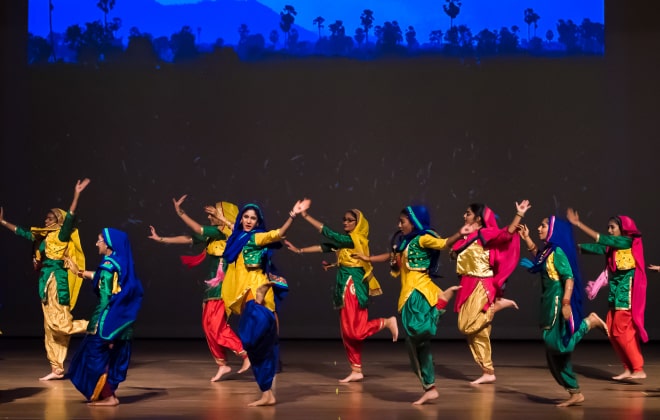Bhangra originated as a dance form Punjab in 2000 BC. In its earliest form, it was a celebratory folk dance that welcomed spring, or Vaisakhi, which also celebrates the harvest season, and is strongly connected to celebrating farmers' happiness after harvesting crops.
Bhangra folk style is widespread and included in almost all Punjabi festivals, traditions, and weddings. There are various kinds of Bhangra styles, but only the free-form traditional bhangra is performed on stage. The performance combines traditional bhangra moves and Punjab dances, like Luddi, Dhamaal, Gham Luddi, and Jhummar.

Initially, Bhangra was a men's dance, but women also started participating in this folk dance. It is now a mainstream dance form, and its influence can easily be seen in the western world. From tradition to modernization, people have developed their style infused with bhangra.
Traditionally, the dance was a fusion of music, song, beats of the dhol (drum), and music from a single-stringed instrument called the iktar (ektara), the tumbi, the chimta, dholki, dhad, dhamru are also used to provide the beats for bhangra. The songs are sung in the form of couplets called bolis.

Also, there are various props and instruments traditionally used in bhangra to add spark and flare to the stage.
Saaps: As the name suggests, saaps means snake; this prop seems like a snake. It is a wooden instrument made up of small X-shaped parts that expand and contract. It is also known as shikke or kenchi.
Khunda: A khunda is a long stick approximately 5 feet long with a hook-type molding at one end. It is considered that Punjabi farmers used to roam in their fields with this walking stick, and it became incorporated into the bhangra prop. It is also a symbol of pride and brought respect to their farm of villagers by swaying from side to side. Khunda is also known as daang.
Kato: In the Punjabi language, Kato means squirrel, and so the shape of the instrument's body appears like a squirrel. It comprises a long stick, a wooden block, a flap that looks like a "head," and a tail. The head and the tail are connected to the strings coming down, which can pull and produce sound turned into a beat while swinging up on the shoulder.
